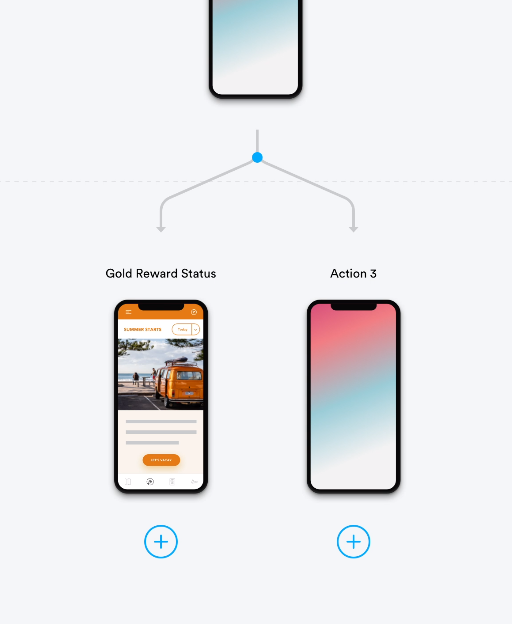Multi-channel marketing and cross-channel marketing are two terms that come up often. Both terms have drifted around marketing blogs for a few years now, but many people can’t concisely define them.
The truth is, multi-channel and cross-channel marketing strategies have a lot in common. Both of them entail using several channels (mediums of communication) to start a conversation with customers. Examples of marketing channels include mobile push notifications, emails, text messages, and much, much more. Technically, a channel is any means of communication between your business and your customers — and communicating with your customers on multiple channels usually means more visibility and more sales.
But there are some key differences between multi-channel and cross-channel strategies, and it all comes down to how these channels interact with one another.
Defining Multi-Channel Marketing and Cross-Channel Marketing
The difference between these two marketing techniques boils down to the following.
Multi-Channel: Across multiple channels
As the name might suggest, multi-channel marketing means communicating with customers on several different channels (e.g. push, web, brick and mortar). The key difference, however, is that the channels are separate. They work independently with no connection between them, meaning customers can’t easily hop from one channel to another during the same journey.
Cross Channel: Across multiple, connected channels
Cross-channel marketing is similar to multi-channel marketing in that it involves communication using different channels, but in this case it also entails passing data between channels to create a seamless customer experience. In this case, customers can ‘cross over’ between channels.
In reality, multi-channel and cross-channel marketing are not opposed to each other. Cross-channel is actually a subset of multi-channel. In other words, a multi-channel marketing campaign might not be cross-channel, but a cross-channel campaign is inherently multi-channel.
The Importance of Multi-Channel Marketing Strategies
Multi-channel marketing strategies emerged due to one simple idea: to engage with customers, you have to be where they are (and this isn’t always in one place).
A multi-channel approach allows brands to target different demographics in numerous ways, which is useful for companies whose target markets vary quite significantly. For example, a brand might want to target a certain demographic using a particular social media campaign on one platform, while simultaneously targeting another group of potential new customers on a different platform. With a multi-channel approach, this is easily achievable. The brand benefits from the introduction of several new groups of potential buyers, and buyers benefit from an experience that suits their preferences.
Planning and managing a set of different marketing campaigns designed for several distinct channels might sound like an expensive task, but it’s actually more cost-effective than focusing all of the team’s efforts on a single channel. A multi-channel approach makes good use of all the communication tools a company has at its disposal, and that ultimately means that companies benefit from more targeted messaging for each platform, with better returns on their investments as a result. Additionally, research suggests multi-channel customers are willing to spend between 13-35% more than single-channel customers when making a purchase.
It’s often said that buyers will interact with a brand seven times before making a purchase – AKA the ‘rule of seven’. With a multi-channel approach, brands will naturally have a greater number of interaction opportunities. Those seven interactions will therefore take place in a shorter space of time, meaning faster conversions and sales targets being met well ahead of schedule.
The Benefits of Cross Channel
Brands adopting a cross-channel approach will invariably be offering their customers a more personalized customer experience.
Cross-channel marketing strategies take the information learned from every single interaction a customer has with a brand, and ensure that this information is carried through to future interactions on other platforms. This of course provides clear benefits to both brand and consumer.
For the consumer, this informative approach quickly equates to a more intuitive online experience. The consumer will find that the brand proactively suggests products and ideas that they like, and uses data on past behavior to interact with them in the manner that they prefer. Consumers will enjoy a seamless experience as they move between different devices, and find that their overall impression of a brand is much improved.
For the brand, there are other important benefits to this strategy. Not only does this tailored approach help brands to convert more customers, it also means spending less per conversion. By using what a customer has already told a brand about their preferences, the brand can communicate with them in a more specific and targeted way. The chances of making a sale will therefore be dramatically improved.
Data is crucial in a cross-channel marketing strategy. The best strategies make full use of data to ensure that customers experience their brand in a consistent and clear way, no matter which channel they’re using. And interactions improve significantly as a result.
What Are Some Examples of Multi-Channel Marketing?
If you’re running digital marketing campaigns in 2019, you’ve probably created multi-channel campaigns without even realizing it. For instance, have you ever…
- Sent an email promotion to your mailing list and then posted about it on Twitter?
- Advertised in-game items via push notifications and an in-app message?
- Sent an abandoned shopping cart reminder via push notification to some users, and email to others?
If you’ve done any of those things, then congrats — you’ve implemented multichannel marketing without knowing it!
Any campaign that involves more than one marketing channel can be an example of multi-channel marketing. In this day and age, it’s hard to plan any kind of campaign without involving several channels in one way or another. Even a brick-and-mortar store with no online presence might still send out coupons and flyers by mail. At this point, multi-channel is a fundamental part of marketing as a whole.
What Are Some Examples of Cross-Channel Marketing?

Cross-channel marketing means communicating with users while having each channel interact with each other. This “interaction” can come in many different forms. Let’s look at a few.
- Cross-channel messaging campaigns, where multiple channels are controlled by a single campaign flow. For example, when a user triggers a given event in a mobile app, they might be entered into a message campaign and receive a ping by either email or push notification, depending on the campaign’s settings. So if you start watching a TV series in a media app, the marketing team might ping you when a new episode is released by push notification if they have push permissions, or by email if they have email permissions.
- Consolidating analytics to develop a holistic view of your audience. Cross-channel analytics lets you collect data from several different sales channels and then consolidate them into a single data set. This could be useful for planning future campaigns based on past performance. If a previous campaign performed poorly across all sales channels, you want to know why — and if it only performed poorly on a single channel, you can rework your strategy on that channel in particular.
- Personalized messaging featuring data from other channels. For instance, if you have a retail app, you might want to deliver product recommendations for items similar to your customers’ most recent purchases. A cross-channel approach would take all recent purchases into account, including those made in brick-and-mortar stores.
In all three examples, the common element is that each channel interacts with the others in some way. In some cases, it might involve passing data back and forth to establish a unified data set for analytics. In other cases, it might involve pulling data from a central source and changing the campaign flow accordingly.
One way or another, the cross-channel approach to marketing means that no channel operates in a vacuum. Every message sent across any given channel is informed by events that were triggered on the other channels.
Is Cross-Channel Marketing Overrated?
You may be wondering, is it worth switching to cross-channel marketing strategies when you already have multi-channel campaigns set up? Multi-channel is a great start, but you can do even more with your campaigns if you start incorporating elements of cross-channel marketing.

Study campaign results as a whole instead of channel-by-channel.
It’s been shown that cross-channel marketing helps businesses overcome vanity metrics, like simple sends and opens, by viewing data as a whole and understanding how each channel funnels customers toward the same goal. It also helps you deliver a consistent brand message by ensuring that each channel is aligned in its content and strategy.
Perhaps the most important benefit of cross-channel marketing is personalized and automated messaging campaigns. Cross-channel campaigns have the potential to be more engaging and more relevant to your customers because they incorporate behavioral data from every touchpoint, not just the current channel. And we’ve seen many times that more engagement equals more ROI.
Getting Started
Jumping into cross-channel marketing might seem intimidating, but it’s not as difficult as it looks. Over the years, we’ve written a lot about multichannel and cross-channel marketing. These articles will help start you off on the right foot.
- Our glossary definition: What Is Cross-Channel Marketing?
- Our multi-channel email marketing study, which shows how mobile email campaigns drive 3x app engagement when combined with push notifications
- How to pick the correct messaging channel for the job
- Best practices for each mobile messaging channel
Contact us for a personalized demo to learn why leading brands trust Leanplum as their mobile marketing platform.
—
Leanplum is a mobile engagement platform that helps forward-looking brands like Grab, Tinder, and Tesco meet the real-time needs of their customers. Schedule your personalized demo here.




